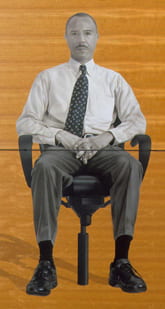


Links
For a general definition of the jury, consult the Ministry of Justice of Jamaica, who defines the jury as consisting of “twelve ordinary citizens who… apply their common-sense to the matter of determining the guilt or innocence of someone accused of an offence.” A more comprehensive history and description is provided by The American Jury, a project hosted by the Chicago Historical society and the National Endowment for the Humanities. Additional background information can be found at the South Texas College of Law, which houses the archives of the American Judicature Society, a public-interest judicial advocacy organization that closed its doors in September, 2014 after 101 years of activity.
An in-depth catalogue of research on specific aspects and variations of the jury system, ranging from the impact of various trial innovations on juror comprehension, performance, and satisfaction to how internet and social media use by jurors “pose substantial challenges to judges and lawyers in terms of maintaing the impartiality of jurors,” has been compiled by the National Center for State Courts at their Center for Jury Studies.
The Equal Justice Initiative has conducted comprehensive studies and aggregated media coverage showing continued racial bias in jury selection. Racial biases have also been shown to impact jury decision making processes, as presented by Samuel Sommers of Tufts University and as aggregated by the journalist Francie Diep; racial bias has been shown to be particularly pertinent in cases relating to capital punishment.
The Fully Informed Jury Association aims to ensure that jurors are fully informed of their rights  as jurors, particularly as it relates to the power of jury nullification. There is a very interesting history regarding what jurors can do–versus what they can be told they can do—and the FIJA is committed to jurors knowing all their rights, regardless of whether or not those rights can be stated in court. I recently wrote a blog post on the subject, particularly from the perspective of the jury’s verdict in the occupation of federal land in Oregon by the Bundy family.
as jurors, particularly as it relates to the power of jury nullification. There is a very interesting history regarding what jurors can do–versus what they can be told they can do—and the FIJA is committed to jurors knowing all their rights, regardless of whether or not those rights can be stated in court. I recently wrote a blog post on the subject, particularly from the perspective of the jury’s verdict in the occupation of federal land in Oregon by the Bundy family.
The Civil Jury Project launched by the NYU School of Law in December, 2016 seeks to examine the rapid decline in the relevance and use of the jury trial in civil cases, particularly the decline’s causes, consequences, and potential solutions. The Project has a helpful list of scholarship covering the civil jury system, as well as a list of further resources available, including a video archive of the various programs they have launched thus far.
For K-12 educational purposes, the civic-education organization iCivics offers an interactive online game titled “We The Jury” where players take on the role of a juror and “analyze evidence, weigh testimony, and use the right arguments to reach a fair and impartial verdict.” The State Bar of Georgia also offers a short cartoon explanation of the importance and historical relevance of the “trial by jury”.
The best jury-inspired mural we’ve ever seen was produced by Michael Fajans and can be viewed at michaelfajans.net. It’s on the masthead of our website. Sadly, Michael passed away in 2006. We will miss him. Those interested should also check out “The Jurors,” a memorial located in Surrey, UK whose completion marked the 800th anniversary of the sealing of Magna Carta; the memorial attempts to represent the importance and origins of the jury system through “twelve intricately worked bronze chairs,” each incorporating “symbols and imagery representing concepts of law” and organized in a way seeming to invites “a gathering, discussion or debate of some kind.”